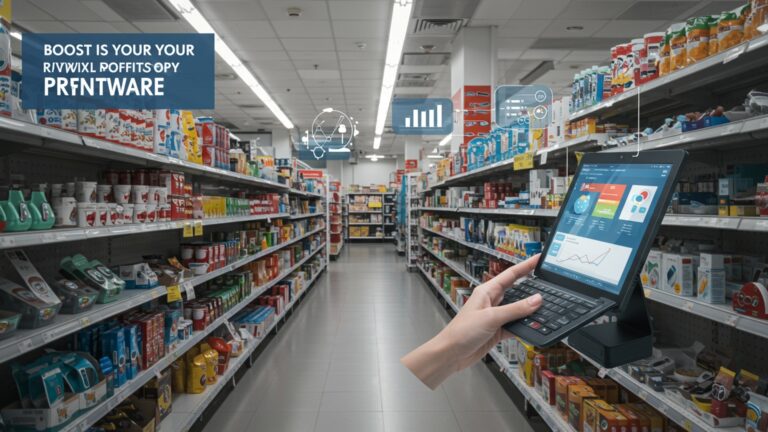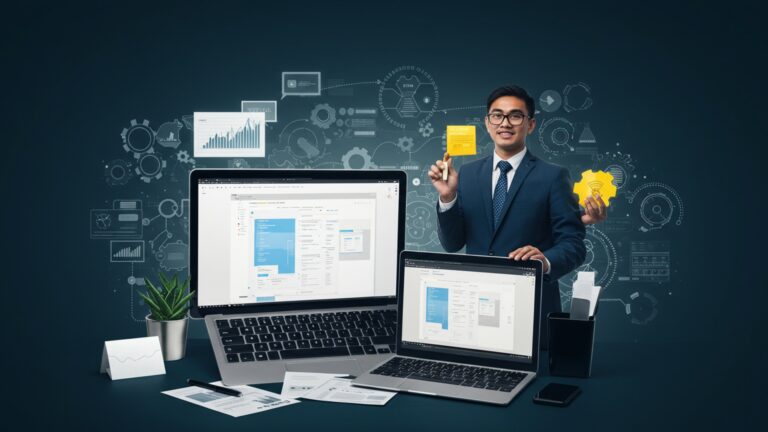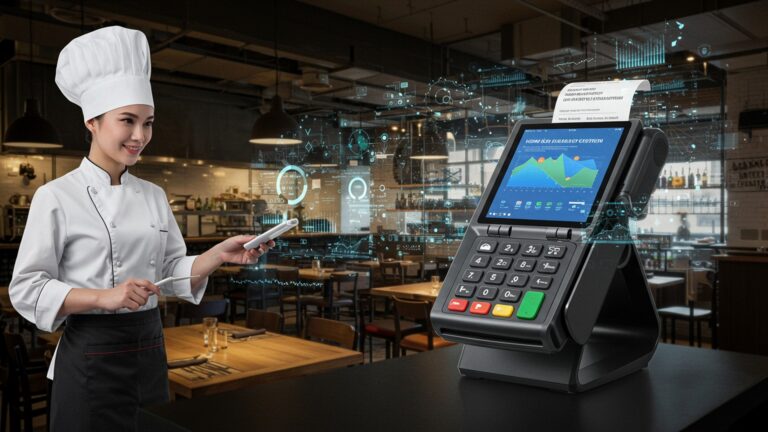How to Choose the Best Android POS Software for Your Business
Navigating the expansive market for android pos software presents a significant challenge for modern businesses, from bustling cafes to growing retail chains, all seeking to streamline operations and enhance customer experiences. The proliferation of powerful, cost-effective Android devices, coupled with the demand for integrated payment solutions and real-time inventory management, underscores the critical need for a robust, scalable system. With recent advancements like enhanced security protocols in Android 14 and the increasing adoption of contactless payments, selecting the right platform goes beyond basic transaction processing; it demands careful consideration of cloud integration, analytics capabilities. seamless hardware compatibility to unlock true operational efficiency and drive sustainable growth in today’s dynamic commercial landscape.

Understanding Android POS Software: A Modern Retail Staple
In today’s fast-paced business environment, selecting the right Point of Sale (POS) system is paramount for operational efficiency and customer satisfaction. Among the myriad options, android pos software has emerged as a particularly popular and versatile choice, especially for small to medium-sized businesses. also increasingly for larger enterprises seeking flexibility and cost-effectiveness. At its core, Android POS software is a system that runs on Android-powered devices—such as tablets, smartphones, or dedicated POS terminals—to process transactions, manage inventory, track sales. handle customer data. Unlike traditional, bulky. often proprietary POS systems, Android solutions leverage the widespread accessibility and familiarity of the Android operating system.
The appeal of android pos software lies in several key areas:
- Cost-Effectiveness
- Flexibility and Portability
- User-Friendly Interface
- App Ecosystem
Android devices are generally more affordable than their Apple iOS or Windows counterparts, reducing initial hardware investment.
Businesses can use existing Android tablets or smartphones, transforming them into fully functional POS terminals. This mobility is invaluable for pop-up shops, food trucks, or even for queue busting in a busy retail store.
Most users are already familiar with the Android operating system, significantly shortening the learning curve for staff.
The vast Android app ecosystem allows for easy integration with a wide range of business tools and applications, enhancing functionality beyond basic transaction processing.
This type of software can be broadly categorized into two main deployment models:
- Cloud-Based (SaaS)
- On-Premise
The software and data are hosted on remote servers, accessible via the internet. This model offers real-time data synchronization, automatic updates. often a subscription-based pricing structure. It’s highly scalable and ideal for businesses with multiple locations or those requiring remote access to sales data.
The software is installed directly on the business’s hardware. data is stored locally. While offering greater control over data and potentially lower long-term costs (after initial investment), it requires more in-house IT expertise for maintenance and security. For modern businesses, the flexibility and resilience of cloud-based android pos software often make it the preferred choice.
Key Features to Look For in Android POS Software
When evaluating different android pos software solutions, a critical step is to identify the core features that align with your specific business needs. The right set of functionalities can transform your operations, enhance customer experience. drive growth. Here’s a breakdown of essential features:
Transaction Processing and Payment Options
This is the fundamental role of any POS system. Ensure the software supports:
- Diverse Payment Methods
- Offline Mode
- Refunds and Returns
- Split Payments
Credit/debit cards (swipe, chip, tap), mobile payments (Google Pay, Apple Pay), gift cards. even alternative payment options. Compliance with PCI DSS (Payment Card Industry Data Security Standard) is non-negotiable for secure transaction handling.
The ability to process transactions even when internet connectivity is intermittent or lost, with automatic synchronization once reconnected. This prevents lost sales during outages.
A straightforward process for handling returns, exchanges. voids.
Allowing customers to pay for a single transaction using multiple payment methods or split the bill among several people.
Inventory Management
Effective inventory management is crucial for profitability, preventing stockouts. reducing waste. Look for features such as:
- Real-time Tracking
- Product Variants
- Bundling and Kitting
- Supplier Management
- Low Stock Alerts
Monitor stock levels across all locations in real-time.
Manage products with multiple options (e. g. , size, color, style).
Create product bundles or kits for promotional purposes.
Track supplier details, purchase orders. receiving.
Automated notifications when inventory levels drop below a predefined threshold.
For a small boutique, for instance, managing different sizes and colors of clothing items efficiently through the android pos software ensures they always have popular items in stock, preventing lost sales and improving customer satisfaction.
Sales Reporting and Analytics
Data-driven decisions are vital for business growth. Robust reporting capabilities provide insights into your business performance:
- Sales Trends
- Employee Performance
- Customer Data
- Customizable Reports
Identify peak selling times, popular products. slow-moving inventory.
Track individual sales, commissions. productivity.
interpret purchasing habits, average transaction value. loyalty.
The ability to generate reports tailored to specific business metrics.
Customer Relationship Management (CRM)
A good POS system should help you build lasting customer relationships:
- Customer Profiles
- Loyalty Programs
- Marketing Integrations
Store contact data, purchase history. preferences.
Implement points-based systems, discounts, or special offers.
Connect with email marketing platforms or SMS services for targeted campaigns.
Employee Management
Streamline staff operations and enhance accountability:
- User Permissions
- Time Clock
- Performance Monitoring
Assign different access levels based on roles (e. g. , cashier, manager).
Track employee clock-ins and clock-outs, breaks. calculate work hours.
Review individual sales performance.
Here’s a simplified comparison table for common features:
| Feature Category | Basic Android POS Software | Advanced Android POS Software |
|---|---|---|
| Transaction Processing | Card, Cash, Basic Refunds | Card (EMV, NFC), Mobile Pay, Gift Cards, Split Payments, Offline Mode, Detailed Refunds |
| Inventory Management | Basic Stock Tracking, Product Setup | Real-time Tracking, Variants, Bundling, Supplier POs, Low Stock Alerts, Multi-location |
| Sales Reporting | Daily/Weekly Sales, Top Products | Detailed Sales Trends, Profit Margins, Employee Performance, Customizable Reports, Export Options |
| Customer Management | Basic Customer Profiles | Detailed Profiles, Purchase History, Loyalty Programs, Marketing Integration |
| Employee Management | User Logins, Basic Permissions | Role-based Permissions, Time Clock, Performance Tracking, Commission Management |
| Hardware Compatibility | Limited to specific devices | Wide range of Android devices, integrated peripherals (scanners, printers, cash drawers) |
Integration Capabilities: Connecting Your Business Ecosystem
A standalone android pos software might handle transactions. its true power is unlocked through seamless integration with other vital business systems. Think of your POS as the central nervous system for sales; it needs to communicate effectively with the other organs of your business to ensure everything runs smoothly. When evaluating options, prioritize those with robust integration capabilities.
Key integration points to consider include:
- E-commerce Platforms
- Accounting Software
- CRM Systems
- Marketing Automation Tools
- Third-Party Apps via API
If you have an online store (e. g. , Shopify, WooCommerce, Magento), integration ensures that your online and in-store inventory, sales. customer data are synchronized. This prevents overselling and provides a unified customer experience. For example, a customer buying an item online should see the same product availability as someone walking into your physical store.
Connecting your android pos software with accounting systems like QuickBooks, Xero, or Sage automates data entry for sales, expenses. taxes. This significantly reduces manual errors, saves countless hours for your bookkeeping team. provides a real-time financial overview. Imagine the efficiency gain for a small business owner who no longer has to manually enter daily sales figures into their accounting software.
While many modern POS systems include basic CRM features, deeper integration with dedicated CRM platforms can provide more comprehensive customer insights, personalized marketing opportunities. enhanced loyalty program management.
Linking your POS to email marketing (e. g. , Mailchimp) or SMS platforms allows you to segment customers based on purchase history and send targeted promotions, birthday discounts, or loyalty program updates directly from your sales data.
A robust android pos software will offer an Application Programming Interface (API) that allows developers to create custom integrations or connect with niche industry-specific tools. This flexibility ensures your POS can grow and adapt with your business needs.
// Example of a conceptual API call for sales data // This is illustrative and not actual code for a specific POS. // A real API call would involve authentication, specific endpoints. data parsing. GET /api/v1/sales/daily? date=2023-10-27 Host: yourpossoftware. com Authorization: Bearer [Your_API_Key] // Expected JSON Response (simplified) { "date": "2023-10-27", "total_sales": 1523. 50, "transaction_count": 45, "top_products": [ {"product_id": "SKU001", "name": "Coffee Mug", "quantity_sold": 12}, {"product_id": "SKU005", "name": "T-Shirt (Large)", "quantity_sold": 8} ] }
When assessing integration capabilities, inquire about:
- Pre-built Integrations
- API Documentation
- Cost of Integrations
Does the POS software offer direct, pre-configured connections to popular platforms you already use or plan to use?
Is the API well-documented and easy for developers to work with, should you need custom integrations?
Are there additional fees for integrating with certain platforms?
Prioritizing strong integration capabilities ensures your android pos software doesn’t operate in a silo but rather as a fully integrated component of your overarching business strategy, driving efficiency and providing a holistic view of your operations.
Security and Compliance: Protecting Your Business and Customers
In an age where data breaches are unfortunately common, the security of your android pos software is not merely a feature but a fundamental requirement. Protecting sensitive customer payment data, sales data. your business’s financial records must be a top priority. A robust POS solution adheres to industry-standard security protocols and helps you maintain compliance with relevant regulations.
Here are the critical security and compliance aspects to scrutinize:
- PCI DSS Compliance
- Data Encryption
- User Access Control
- Cloud Security Measures
- Regular Security Updates and Patches
- Backup and Recovery
- Fraud Detection
The Payment Card Industry Data Security Standard (PCI DSS) is a set of security standards designed to ensure that all companies that process, store, or transmit credit card data maintain a secure environment. Any android pos software you choose must be PCI DSS compliant. its payment processor should be as well. This includes measures like data encryption, secure network configuration. regular security testing. Failure to comply can result in significant fines and reputational damage.
All sensitive data, especially payment insights, should be encrypted both in transit (when it’s being sent over the internet) and at rest (when it’s stored on servers). Look for solutions that use strong encryption protocols like TLS (Transport Layer Security) for data in transit and AES-256 for data at rest.
The software should allow for granular user permissions, meaning you can define exactly what each employee can access and do within the system. For instance, a cashier might only have access to transaction processing, while a manager can access reports, inventory. refunds. This minimizes the risk of internal fraud and unauthorized data access.
If opting for cloud-based android pos software, inquire about the provider’s data center security. This includes physical security, network firewalls, intrusion detection systems, regular security audits. disaster recovery plans. Leading providers often use secure cloud infrastructure like AWS or Google Cloud, which have robust security frameworks.
Software vulnerabilities are constantly being discovered. Your chosen POS provider should have a proactive approach to security, regularly releasing updates and patches to address new threats.
In the event of data loss (due to hardware failure, cyberattack, or human error), a reliable backup and recovery system is essential. Cloud-based solutions typically offer automated, redundant backups, ensuring your data can be restored quickly.
Some advanced android pos software solutions incorporate fraud detection mechanisms to identify suspicious transactions or patterns, alerting you to potential fraudulent activity.
For example, a small cafe using a PCI-compliant android pos software can assure its customers that their credit card details are handled securely. If a data breach were to occur with a non-compliant system, the cafe owner could face severe financial penalties and a loss of customer trust, potentially jeopardizing their entire business. Always prioritize a vendor with a proven track record in security and transparency regarding their compliance certifications.
Scalability and Future-Proofing: Growing with Your Business
Choosing an android pos software is an investment. like any good investment, it should be capable of growing alongside your business. A solution that meets your needs today but becomes a bottleneck tomorrow will ultimately cost you more in the long run through migration efforts and lost opportunities. Scalability and future-proofing are therefore critical considerations.
Consider the following aspects:
- Support for Multiple Locations
- User and Hardware Limits
- Feature Expansion
- Hardware Compatibility and Flexibility
- API and Customization Options
- Data Portability
If you envision opening additional branches, pop-up stores, or expanding into different markets, your android pos software must seamlessly support multi-location management. This includes centralized inventory, sales reporting. customer data across all locations, allowing you to manage your entire enterprise from a single dashboard. For example, a restaurant chain expanding from one to five locations would need to manage inventory transfers, employee schedules. consolidate sales reports across all sites without friction.
Does the software impose limits on the number of users, POS terminals, or products you can add? While a basic plan might suffice for a single user and a few hundred products, ensure there are clear upgrade paths that can accommodate thousands of products and dozens of employees without requiring a complete system overhaul.
Businesses evolve. so do their needs. Look for an android pos software that regularly introduces new features and functionalities. A vendor committed to continuous development ensures your system remains competitive and can adapt to emerging retail trends, such as curbside pickup, online ordering, or advanced analytics.
While Android offers flexibility, some POS software might be optimized for specific hardware. Ensure the software is compatible with a wide range of Android devices and peripherals (scanners, printers, cash drawers) to avoid vendor lock-in and allow for future hardware upgrades without software compatibility issues. The ability to easily add new payment terminals or handheld devices as your operations expand is a significant advantage.
As discussed in integrations, a robust API allows for custom development and niche integrations. This is crucial for future-proofing, as it means you’re not solely reliant on the vendor’s roadmap for specific functionalities. If your business develops a unique operational need, an open API allows you to build a solution around your existing android pos software rather than switching systems.
Ensure that your business data can be easily exported in a standard format (e. g. , CSV, JSON). This is vital if you ever decide to switch POS providers or need to import data into other business intelligence tools. Data portability gives you control over your data and reduces the friction of potential future migrations.
Pricing Models and Return on Investment (ROI)
Understanding the pricing structure of android pos software is crucial for budgeting and assessing its long-term financial viability. POS systems typically come with various costs. a clear understanding of these will help you calculate the potential Return on Investment (ROI) and avoid hidden fees.
Common pricing models include:
- Subscription-Based (SaaS)
- Pros
- Cons
- Transaction-Based Fees
- Pros
- Cons
- One-Time Purchase (On-Premise)
- Pros
- Cons
This is the most prevalent model for cloud-based android pos software. You pay a recurring monthly or annual fee. Pricing often varies based on the number of terminals, users, locations, or included features.
Lower upfront cost, predictable monthly expenses, automatic updates. typically includes support.
Ongoing cost, you don’t “own” the software.
Some providers charge a percentage or a flat fee per transaction in addition to or instead of a subscription. This is more common with integrated payment processors.
Can be low for businesses with low transaction volumes.
Costs can escalate quickly with high sales volumes.
Less common for Android solutions. some on-premise software might offer a perpetual license for a single upfront payment.
No recurring software fees after initial purchase.
Higher upfront cost, ongoing maintenance. update costs often separate, requires your own server infrastructure.
Beyond the software itself, consider these additional costs:
- Hardware
- Payment Processing Fees
- Setup and Installation
- Training
- Add-ons and Integrations
Android tablets, dedicated POS terminals, barcode scanners, receipt printers, cash drawers. While Android hardware is generally affordable, these are still initial investments.
These are separate from the POS software cost, charged by your payment processor (e. g. , Stripe, Square, PayPal, or a traditional merchant service provider). Compare rates carefully.
Some vendors charge for initial setup, data migration, or on-site installation.
While many Android systems are intuitive, extensive staff training might incur costs.
Certain premium features or third-party integrations might come with additional monthly fees.
Calculating ROI
To calculate the ROI for your android pos software, consider both direct cost savings and indirect benefits:
- Increased Efficiency
- Reduced Errors
- Improved Sales
- Better Inventory Control
- Data-Driven Decisions
How much time will the POS save in transaction processing, inventory management. reporting? Time saved translates to labor cost reductions or allows staff to focus on more productive tasks.
Automated processes reduce manual errors in pricing, inventory. accounting, saving money and improving accuracy.
Features like loyalty programs, targeted marketing through CRM. faster checkout times can lead to increased customer satisfaction and repeat business, directly impacting sales.
Preventing stockouts of popular items and reducing overstocking of slow-moving goods directly impacts your bottom line. A study by the National Retail Federation indicated that retailers lose billions annually due to out-of-stocks.
Robust reporting allows you to identify profitable products, optimize staffing. make informed strategic decisions that boost revenue.
For instance, if an android pos software costs $70/month and saves you 10 hours of manual inventory management (at $15/hour) and reduces shrinkage by $50/month due to better tracking, the direct monthly savings would be $150 + $50 = $200. The net gain would be $200 – $70 = $130/month, illustrating a clear positive ROI. Always ask for a detailed breakdown of all potential costs and try to project the tangible and intangible benefits to determine the true value.
Support and Training: Ensuring Smooth Operations
Even the most advanced android pos software is only as good as the support system behind it. When issues arise—and they inevitably will, whether it’s a technical glitch, a user error, or a question about a specific feature—you need reliable and accessible support to minimize downtime and prevent disruption to your business. Similarly, comprehensive training ensures your team can leverage the software effectively from day one.
Key aspects to evaluate for support and training:
- Support Channels
- 24/7 Phone Support
- Email/Ticket System
- Live Chat
- Knowledge Base/FAQs
- Community Forums
- Response Times
- Quality of Support
- Onboarding and Initial Setup
- Training Resources
- Video Tutorials
- Webinars
- User Manuals/Guides
- On-site Training
- Ongoing Training and Updates
What methods does the vendor offer for support?
Crucial for businesses operating outside standard office hours, like restaurants or retail stores.
Good for non-urgent issues, providing a written record of communication.
Often the quickest way to get answers to minor questions.
A comprehensive online resource where you can find answers to common questions and troubleshoot minor issues yourself.
Peer-to-peer support can sometimes offer unique solutions or insights.
How quickly does the support team typically respond to inquiries? A vendor might offer 24/7 support. a slow response time can still be detrimental. Inquire about guaranteed response times for different tiers of issues.
Are the support agents knowledgeable, patient. able to resolve issues effectively? Look for vendors with a reputation for excellent customer service. Reading online reviews and testimonials can provide insights into the quality of support.
Does the vendor provide assistance with the initial setup, data migration from an old system. configuration of your android pos software? A smooth onboarding process can save significant time and frustration.
Accessible and easy to follow, allowing staff to learn at their own pace.
Live or recorded sessions that cover specific features or use cases.
Detailed documentation for reference.
Some vendors offer in-person training, especially for larger businesses, though this may come at an additional cost.
As the android pos software evolves with new features, does the vendor provide resources to keep your staff updated? Regular training ensures your team utilizes the system’s full potential.
Imagine a busy Saturday morning at your coffee shop when the POS system suddenly stops processing credit cards. Having immediate access to 24/7 phone support that can quickly diagnose and resolve the issue could be the difference between a minor hiccup and losing hundreds of dollars in sales and frustrating dozens of customers. Conversely, choosing a system with poor support can lead to prolonged outages and significant business disruption. Always test the support channels during your evaluation phase if possible.
Testing and Implementation: A Smooth Transition
Once you’ve narrowed down your choices for android pos software, the final crucial steps involve thorough testing and a well-planned implementation strategy. A smooth transition minimizes disruption to your daily operations and ensures your team is proficient with the new system from day one.
Here’s a guide to effective testing and implementation:
- Utilize Free Trials and Demos
- Simulate Transactions
- Test Inventory Management
- Explore Reporting
- Check Integrations
- Assess User Experience
- Pilot Program (if applicable)
- Data Migration Strategy
- Staff Training
- Start Early
- Hands-on Practice
- Role-Specific Training
- Create Reference Materials
- Designate Super-Users
- Phased Rollout vs. Big Bang
- Phased Rollout
- Big Bang
- Post-Implementation Support
Most reputable android pos software providers offer free trials or personalized demos. This is your opportunity to put the software through its paces in a real-world simulation without commitment.
Process various types of sales, including cash, card, refunds. split payments. Test scenarios like item voids, discounts. gift card redemptions.
Add new products, adjust stock levels. run low-stock alerts. See how product variants (e. g. , different sizes/colors) are handled.
Generate different sales reports and ensure the data is intuitive and provides the insights you need.
If possible, test key integrations with your existing e-commerce, accounting, or CRM platforms.
Have different staff members (with varying tech proficiency) test the system to gauge its ease of use and identify any potential bottlenecks in workflow.
For larger businesses or those with multiple locations, consider a pilot program where you implement the new android pos software in one store or department first. This allows you to identify and resolve issues on a smaller scale before a full rollout. Gather feedback from the pilot team and use it to refine your training and implementation plan.
Plan how you will transfer existing product data, customer lists. historical sales details to the new system. Work with your vendor or a qualified IT professional to ensure data integrity and avoid loss. Many systems offer import tools, often using CSV files.
This is arguably the most critical part of implementation.
Don’t wait until the last minute. Provide ample time for staff to familiarize themselves with the new android pos software.
Offer hands-on training sessions where employees can practice processing transactions and using key features in a non-live environment.
Tailor training to different roles (cashiers, managers, inventory staff) to cover the features most relevant to their responsibilities.
Develop quick-reference guides or cheat sheets for common tasks.
Identify a few tech-savvy employees who can become “super-users” and assist their colleagues with questions during the initial rollout.
Gradually introduce the new system, perhaps starting with a few terminals or specific functions. This allows for easier troubleshooting and less disruption.
Switch all systems over at once. This requires meticulous planning and confidence in the system but can avoid running two systems concurrently.
Ensure you have extra support available during the first few days or weeks after launch. This might involve having vendor support on standby or your designated super-users actively assisting staff on the floor. Monitor performance closely and address any issues promptly.
Conclusion
Choosing the ideal Android POS software isn’t merely about ticking features off a list; it’s about envisioning your business’s future and empowering its daily operations. My personal tip, drawn from years observing businesses, is to always leverage free trials. I’ve seen countless entrepreneurs avoid significant integration headaches by thoroughly testing how a system handles their unique workflows, like real-time inventory updates or specific customer loyalty programs, before making a final commitment. Remember, the best choice seamlessly integrates with current trends, from contactless payments to robust cloud-based reporting, ensuring your data is accessible and actionable from anywhere. Don’t underestimate the power of a system that can adapt to both a bustling food truck needing mobile flexibility and a multi-outlet boutique managing omnichannel sales. Your proactive research today in selecting a truly dynamic Android POS will define your business’s agility and success for years to come. Embrace this decision as an investment, not just an expense. watch your operations flourish.
More Articles
How to Easily Set Up and Use Mobile POS Software for Seamless Sales
Learn How to Choose the Right POS Software for Efficient Retail Operations
Unlock Efficiency How to Choose Top POS Billing Software for Your Business
How to Master Inventory Management POS India 10 Strategies for Success
7 Essential POS System Benefits for Your Saree Shop Success
FAQs
Where do I even begin when looking for Android POS software?
Start by identifying your specific business needs. Are you a retail shop, a restaurant, or a service provider? List your absolute must-have features – things like inventory management, sales reporting, or customer loyalty programs. Knowing your core requirements will narrow down your options significantly and prevent you from getting overwhelmed.
What key features should I really care about in a POS system?
Beyond basic sales, look for robust inventory management (tracking stock, low-stock alerts), comprehensive reporting (sales trends, employee performance), customer relationship management (contact info, loyalty programs). employee management (time clock, permissions). If you’re a restaurant, consider table management or kitchen display system integration. For retail, barcode scanning and e-commerce sync are often crucial.
Is it going to be a nightmare to learn and use?
Not if you pick wisely! Prioritize software with a clean, intuitive. user-friendly interface. A system that’s easy to navigate means less training time for you and your staff, reducing errors and increasing efficiency. Many providers offer free trials or demos, so definitely test it out firsthand before making a commitment.
How much does good Android POS software actually cost?
Costs can vary quite a bit. You’ll typically encounter subscription models (monthly or annual fees, often per terminal or user) and sometimes transaction fees. Always factor in potential setup fees, hardware expenses (if you need new devices). any add-on modules you might require. Get a clear, all-inclusive breakdown of costs upfront to avoid unexpected surprises.
What if my business grows? Will I have to switch everything?
Hopefully not! Look for software that’s designed to be scalable. This means it can easily handle increased transaction volumes, more inventory, additional users, or even multiple locations without needing a complete system overhaul. Ask providers about their solutions for growing businesses and multi-store capabilities to ensure it can keep up with your future success.
What kind of help can I expect if something goes wrong or I have questions?
Good customer support is absolutely vital. Check what support channels are available – phone, email, live chat, or an extensive knowledge base. Look for providers with responsive and knowledgeable teams, ideally available during your business hours. Reading user reviews can give you a good idea of their support quality and responsiveness.
Can it work with other tools I already use, like accounting software?
It absolutely should! Look for Android POS software that integrates smoothly with other essential business tools. This includes popular accounting software (like QuickBooks or Xero), e-commerce platforms, various payment processors. even loyalty programs. Seamless integration saves you tons of manual data entry, prevents errors. ensures all your business systems are communicating effectively.






